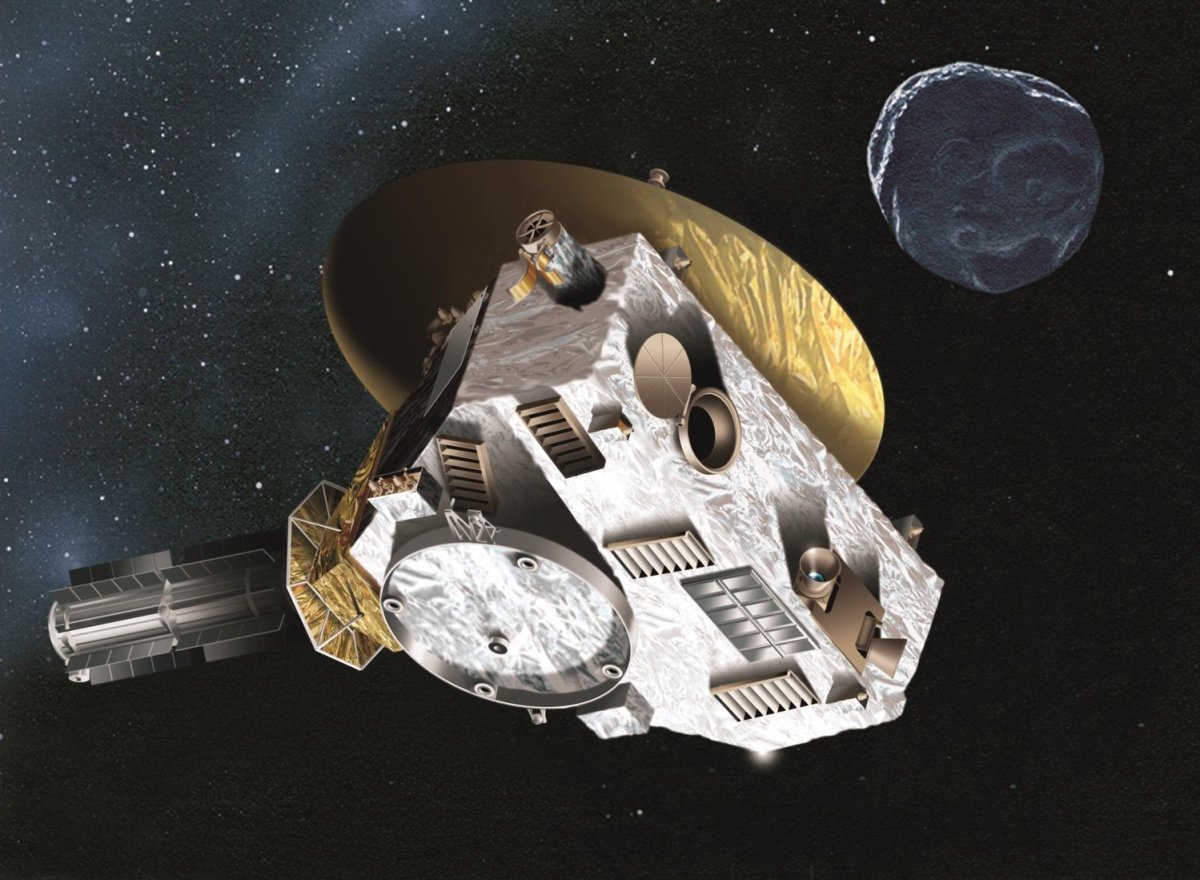On New Year's Day, NASA's New Horizons probe made history when it successfully flew past the farthest object from Earth ever to be visited by a spacecraft—Ultima Thule.
The distant object is thought to have an elongated shape, akin to a bowling pin, and likely measures around 20 by 10 miles, according to observations made by New Horizons—which made its closest approach at 2,200 miles at 12:33 a.m ET. However, there is also a chance that Ultima Thule is two objects in orbit around each other.
Read more: NASA breaks a record with New Horizons photos—never has a camera been so far from Earth
Ultima Thule—which was first discovered by the Hubble Space Telescope in June 2014—lies in a disc of small bodies that circle the sun beyond the orbit of Neptune, known as the Kuiper belt. These objects are remnants of the early solar system, and, as such, studying them could reveal new insights into its formation.
Officially known as "(486958) 2014 MU69," the object was nicknamed Ultima Thule in reference to a Latin phrase meaning a metaphorical place beyond the known world.
"Congratulations to NASA's New Horizons team, Johns Hopkins Applied Physics Laboratory and the Southwest Research Institute for making history yet again," NASA administrator Jim Bridenstine said in a statement.
"In addition to being the first to explore Pluto, today New Horizons flew by the most distant object ever visited by a spacecraft and became the first to directly explore an object that holds remnants from the birth of our solar system. This is what leadership in space exploration is all about."
As New Horizons made its close approach to Ultima Thule, it beamed science data back to Earth, as well as information indicating that it was operating smoothly. Even though this data traveled at close to the speed of light, it took around 10 hours for the first batches of data to be received by the Johns Hopkins Applied Physics Laboratory, because of the vast distance between Ultima and Earth.
"New Horizons performed as planned today, conducting the farthest exploration of any world in history—4 billion miles from the sun," Alan Stern, principal investigator for the New Horizons project from the Southwest Research Institute in Boulder, Colorado, said in the statement. "The data we have look fantastic, and we're already learning about Ultima from up close. From here out the data will just get better and better!"
New Horizons—which launched in January 2006 and has already flown by Pluto—will continue making observations of Ultima Thule over the next couple of years, with scientists hoping that the data collected would reveal the secrets of the distant object.
"Reaching Ultima Thule from 4 billion miles away is an incredible achievement," Adam Hamilton, president and CEO of the Southwest Research Institute, said in the statement. "This is exploration at its finest. Kudos to the science team and mission partners for starting the textbooks on Pluto and the Kuiper Belt. We're looking forward to seeing the next chapter."
Pluto is one of three officially recognized dwarf planets in the Kuiper belt, along with Haumea and Makemake. However, some scientists believe that there is a hypothetical planet beyond Pluto's orbit—often referred to as Planet Nine or Planet X—as outlined in this 2016 paper published in the Astronomical Journal.
While researchers have not found any direct evidence for the hypothetical planet, its existence has been inferred because of the strange orbits of several distant objects that lie beyond the orbit of Neptune.

Uncommon Knowledge
Newsweek is committed to challenging conventional wisdom and finding connections in the search for common ground.
Newsweek is committed to challenging conventional wisdom and finding connections in the search for common ground.
About the writer
Aristos is a Newsweek science reporter with the London, U.K., bureau. He reports on science and health topics, including; animal, ... Read more
To read how Newsweek uses AI as a newsroom tool, Click here.








